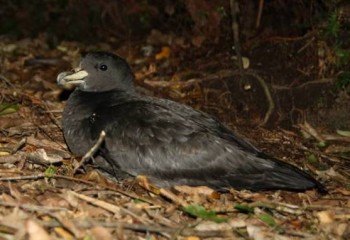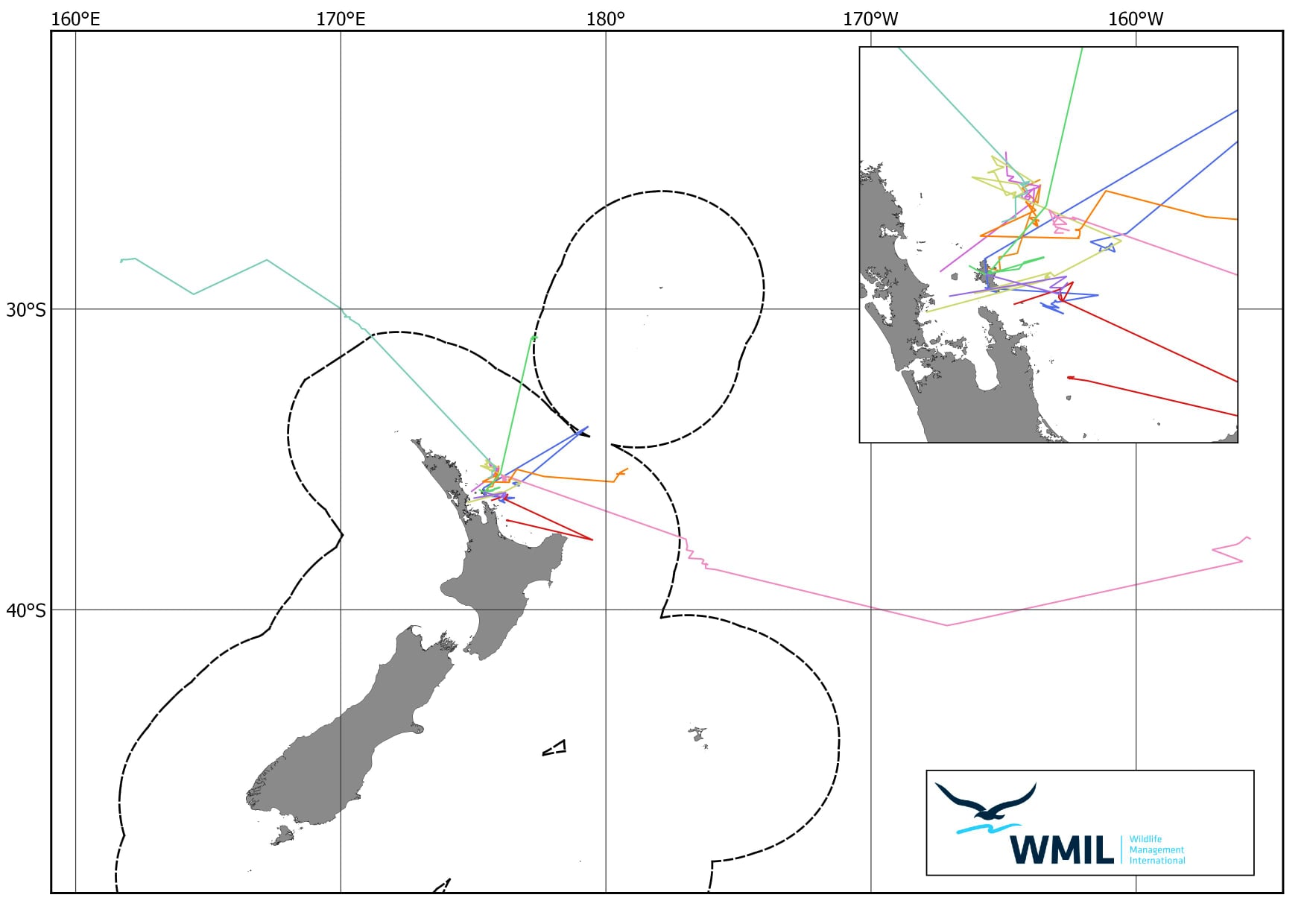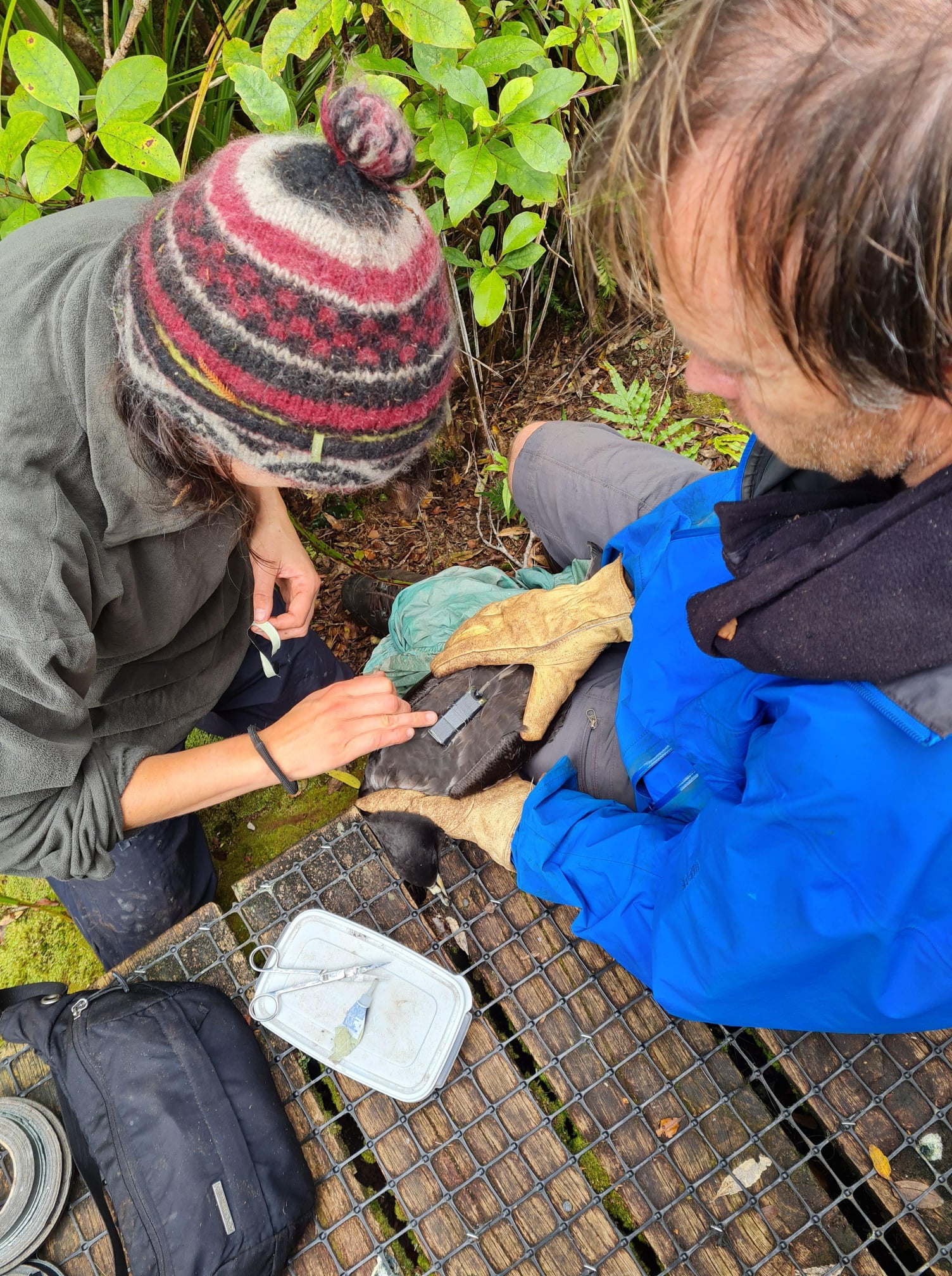
Westland Petrel; photograph by Susan Waugh
Susan Waugh (Office of the Parliamentary Commissioner for the Environment, Wellington, New Zealand) and colleagues have published in the open-access journal Marine Ornithology on storms affecting globally Endangered and nationally Naturally Uncommon Westland Petrels Procellaria westlandica at their sole breeding site.
The paper’s abstract follows:
“The density and distribution of Westland Petrel burrows was assessed over a 12-year period (2007-2019). During that time, burrow density increased while occupancy remained stable, commensurate with an annual population growth rate of 1.022 (95% confidence interval: 0.971-1.076), as estimated using mark recapture data. From our surveys, we estimated a 2019 baseline population of ~6 200 breeding pairs and a world population of 13 800-17 600 individuals, covering around 95% of the population. Transects were conducted to establish the location and density of 17 petrel sub-colonies in rugged, untracked terrain in Paparoa National Park, West Coast, New Zealand. Major storms in 2014-2018 caused widespread treefall and landslides, destroying breeding habitat throughout the species' breeding range. Demographic effects of the major and ongoing habitat loss may continue in the medium to long term, as birds re-establish burrows and partnerships following loss of their habitat. Our study illustrates the complex effects of climate-related disruption on the biology of a long-lived species. With a single nesting area in the West Coast region, climate change will likely have an ongoing influence on the species' global population, since an increase in the frequency of severe weather events, including ex-tropical cyclones, is expected. However, current indications suggest that the species has some flexibility to adapt and to occupy new areas following habitat disturbance.”
Reference:
Waugh, S.M, Barbraud, C., Delord, K., Simister, K.L.J., Baker, G.B., Hedley, G.K., Wilson, K.-J. & Rands, D.R.D. 2020. Trends in density, abundance, and response to storm damage for Westland Petrels Procellaria westlandica, 2007-2019. Marine Ornithology 48: 273-281.
John Cooper, ACAP Information Officer, 10 November 2020

 English
English  Français
Français  Español
Español 




